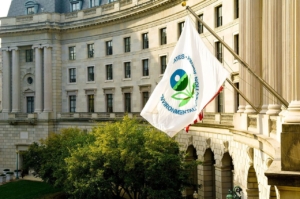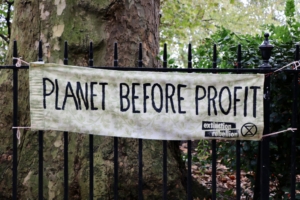Sue and Settle Gets Lit, Blurred Campaign Lines, and What You Don’t Say
Here’s What You Need To Know
Last week, the Interior Department announced that it is creating a website to publicly disclose attorneys’ fees paid out by the agency in legal settlements, bringing light to a previously non-transparent practice that the public is largely unaware of. The agency’s decision to bring transparency and accountability to a practice that has funneled millions of taxpayer dollars – not to efforts and initiatives that further the Interior Department’s mission, but rather to activist interest groups to cover attorneys’ fees they incur for suing that very same agency and advancing their policy priorities – should be welcome news for those who care about the agency’s mission, good government proponents, and all taxpayers.
Here’s what you need to know about the Interior Department’s push to illuminate so-called “sue and settle” practices targeting it, and what this means for corporate and cause organizations engaged in the public policy debates entangled by this tactic:
- So, What Is Sue And Settle? Sue and settle refers to the strategy in which a special interest group files a lawsuit against a federal agency to force it to adapt their policy interests and priorities. Instead of take their case to court, the group comes to a settlement agreement with the agency, negotiated “behind closed doors” and with no public participation, that advances their interests. Further, this practice circumvents the transparency and accountability that comes with the normal legislative and rulemaking process.
- Bringing Light To Sue And Settle Practices Is A Priority In This Administration: In a TL;DR edition from October 2017, we wrote about the Environmental Protection Agency (EPA) directive ending sue and settle practices against it, speculating that Cabinet officials in their respective agencies would follow EPA’s lead. That is exactly what happened when Interior released an order in September 2018 outlining steps it would take to promote “transparency and accountability in consent decrees and settlement agreements,” of which one of those steps included the creation of a “publicly accessible ‘Litigation’ webpage that is prominently linked to the Office of the Solicitor’s homepage.” Last week’s announcement of a memo by Interior’s Principal Deputy Solicitor Daniel Jorjani in response to the September order states that a webpage will be developed “within 30 days” that will list details of legal settlements and cases. In the words of a Department official, “only by shining a light on this process can you decide if [your tax money] is being put to good use.”
- What Is Notable About Interior’s Announcement? While the Department of Treasury’s Judgment Fund database already tracks what federal agencies disburse in attorneys’ fees from settlements, it does not always list plaintiffs’ names or their legal counsel. Interior’s website is expected to provide more details about its legal settlements and cases, of which it should have a large dataset to choose from because it paid out nearly $14 million to groups suing it during the previous Administration – the most of any agency. By providing more detail about its settlements and cases in the public arena, and in particular the exact amounts of taxpayer dollars disbursed to who or what organizations and why, Interior can shed a light on the motivations and true nature of some of the most prominent activist interest groups engaging in today’s public policy debates.
- Exposing The True Nature Of Oppositional Forces: Simply stated, the recourse available to help individuals, small businesses, and groups to recoup legal costs for defending their rights has been coopted for profit by professionalized and savvy activist interest groups. Environmental groups have been especially successful at suing federal agencies to increase regulation and then collect taxpayer dollars to cover their attorneys’ fees, which according to a 2016 investigation resulted in federal agencies paying out more than $49 million to lawyers who sued the previous Administration under the Clean Air, Clean Water, and Endangered Species Acts. This includes large and financially successful activist groups such as Earthjustice, whose sole purpose is to aid activist groups in taking legal action against government. Earthjustice received more than $2.3 million from taxpayers for suing the Interior department in 2016 despite having net assets totaling $68 million the year before – hardly a ragtag group in need of coerced taxpayer subsidies.
- What Insights Can Be Leveraged From This Information? For companies and industry groups in the energy, financial services, chemical, and manufacturing sectors – and others that find themselves targeted and pressured by environmental activists –understanding the funding, coordination, and key stakeholders behind lawsuits against federal agencies on their issues is a crucial component of risk analysis, particularly as sue and settle has become a popular strategy for special interest groups seeking to force agencies to adopt regulations without gaining voter approval at the ballot box or going through the regulatory process set by Congress.
Interior’s move to open up public access to the details of its legal settlements and cases will help shine light on how such avenues are being weaponized by activist interest groups to target companies and industry groups, as well as force policy implementation on the American public regardless of the judgement and direction of their elected representatives. This sunshine provides an opportunity to better understand and address the risk faced from special interest activist groups wielding this tactic. In today’s politicized environment, having this information advantage can mean the difference between achieving public policy objectives or not.
Subscribe to Receive Insights
"*" indicates required fields
News You Can Use
BLURRED CAMPAIGN LINES
A super PAC supporting Washington Governor Jay Inslee’s presidential campaign has blurred the lines of legality regarding campaign finance. Described by critics as “probably within the letter of the law,” the Act Now On Climate PAC has found a way to share critical voter information with Inslee’s campaign by running hundreds of pro-Inslee Facebook ads which link directly to the campaign website, allowing the latter to view exact data on the success of each ad broken up by user age, gender, and location without ever communicating with the PAC directly.
While pushing the envelope just far enough to give the campaign an edge at a time when data is more valuable than ever, this tactic could also be leveraged in opponent messaging to raise questions among the electorate of unfair or improper coordination, despite such coordination being apparently, technically legal. But, for that to happen, Inslee would first have to separate himself from the slew of candidates running for the nomination. More likely, such tactics could easily proliferate to other campaigns and become a common technique to push the boundaries of existing campaign law.
SWEET CHERRY PIE
The wait is over: President Donald Trump’s Food and Drug Administration (FDA) is taking steps to finally get big government out of America’s baked goods. In case you didn’t already know, current FDA regulations state that a frozen cherry pie must contain no less than 25% cherries by weight, with no more than 15% of those cherries being blemished. These rules have long provoked the ire of bakers across the country, who say the hardline standards can prevent innovation and spark unnecessary lawsuits (see: Cheezy lawsuits).
The Trump Administration’s push for broad deregulation is made of a series of small changes that affect the bigger picture of the U.S. economy. While a marginal shift in a small market might not seem significant to the average citizen, it could be the difference between whether a business succeeds or fails.
DEVIL IN THE MANDATE DETAILS
With the question of climate change looming larger over the U.S. each year, a debate has persisted: what should be done about it? A common answer to that question has been the increased use of renewable energy mandates, which require a portion of a state’s electricity to come from renewable sources such as wind and solar power.
A recent study from the University of Chicago, however, claims that these policies not only significantly increase electricity prices, but also reduce carbon emissions far less effectively than alternatives. As these discussions rage on in Congress and across the country, it is important for policymakers and stakeholders to have the full range of information required to make an intelligent, effective decision on the problems they wish to solve and avoid implementing ineffective “solutions” that have unintended negative consequences on jobs, families, and businesses. As always, the devil is in the details.
BE CAREFUL WHAT YOU DON’T SAY
Sir Roger Scruton, a conservative English philosopher, recently experienced firsthand the full power of social media mob justice. Within hours of a report alleging Scruton made “outrageous remarks” rife with anti-Semitism and Islamophobia, Scruton was sacked, and his character assassinated. The Twitter posse was still patting itself on the back when the “outrageous remarks” themselves were released in a video. What did Scruton say to deserve such blowback? It turns out, nothing at all: his actual words were distorted beyond recognition, and those who spread the initial claims were forced to apologize, but the damage had been done.
Scruton’s story is a cautionary tale that feels all too familiar. Whether due to ill-intent or simple recklessness, social media has become an optimal environment for damaging claims—true or false—to spread like wildfire. The ability to provide a quick, factual response to potential threats becomes more valuable every day, not only for individuals, but for companies who find their reputations under attack as well.



